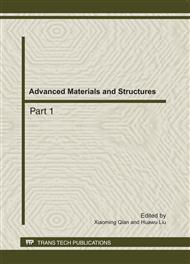p.506
p.511
p.515
p.519
p.523
p.527
p.531
p.535
p.543
Study on the Surface Quality of Fender NC Incremental Forming
Abstract:
The NC incremental sheet metal forming technology is a flexible forming technology without dedicated forming dies. The forming locus of the forming tool can be adjusted by correcting the numerical model of the product. Because the deformation of sheet metal only occurs around the tool head and the deformed region is subjected to stretch deformation, the deformed region of sheet metal thins, and surface area increases. Sheet metal forming stepwise is to lead to the whole sheet metal deformation. The principle of NC incremental sheet metal forming and the forming process of the fender are introduced. The effect of process parameters on forming is analysed. The improvement method of the forming quality is suggested. The groove is created in the starting point of tool moving when the starting point of tool moving locus at all layers is identical. The groove can be eliminated when the starting point of tool moving locus at all layers is different. The feed pitch p increase, the process time decrease, production rate and surface degree of roughness increase. In general, the feed pitch is 0.25mm.
Info:
Periodical:
Pages:
523-526
Citation:
Online since:
September 2011
Authors:
Keywords:
Price:
Сopyright:
© 2011 Trans Tech Publications Ltd. All Rights Reserved
Share:
Citation:


